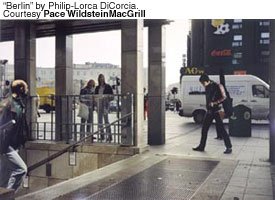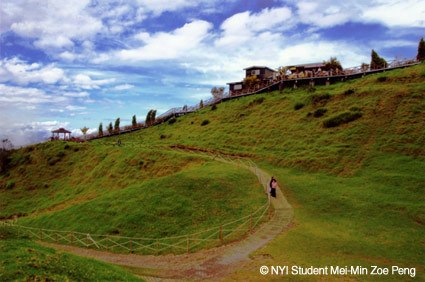Here are some tips on photographing fashion shows from NYI Student Advisors Ted Fisher and Rachel Neville.

1. Study the Field
In discussing photographing fashion shows with Ben, we took a look at the photographs of past runway fashion shows to consider what framing/composition ideas would work for the shoot. New York Fashion has a great section of runway images to study: notice the amount of room left below shoes and above the models heads in the full length photographs, and notice the relationship of model to background.
2. Position is Key
Expect a crowd fighting over the best positions to photograph from, and realize that you'll need to get there early and also have the proper permissions from the organizers. (At the big events, of course, there is a process requiring a press pass and often you'll need to request one months ahead.) If you get a great spot, do your best to keep it and maintain enough room to do your work. Before throwing any elbows or harsh words at the other photographers, though, remember you may see the same group at the next event. Probably better to make some new friends. If you can get access, also consider that "behind the scenes" photographs might also be useful. Consider also hanging out after the fashion show and handing out some of your business cards — you might make great contacts with hair and makeup people, and maybe the models as well. It's a great opportunity for networking.

3. Develop a Good Workflow
If you photograph several fashion shows in a day, and download memory cards full of images at the end of the day, you'll need a system for quickly cataloging and sorting these. Besides finding your best photographs now, you may find there's value in creating a library of images searchable by keywords. You might realize a few years from now that you photographed the newest supermodel during her first runway show — wouldn't it be great if you could go back and find that image? We're fans of Adobe Lightroom, but there are other software packages that will work for this task just as well.
4. Check the Lighting and White Balance
In the biggest fashion shows, you'll be working with the lighting that's provided. Ben found a situation where the light level was very low, and he was able to add flash. That won't always be possible. Remember to check your white balance, as you may need to switch to a "tungsten" or "indoor" setting. Also, taking some test shots early and checking the histogram — the graphic representation of the tones in the image — will let you know if you have your exposure right.

5. Consider a Monopod and a Bracket
Holding a DSLR and a heavy lens — or perhaps two, depending on the situation — can get heavy. There's not enough room at the end of the runway for tripods, but sometimes you might be able to bring a monopod to support and stabilize your camera. Runway photographers often also mount their speedlights on a bracket, so if you'll be doing a lot of this type of fashion photography, that might be a great addition to your kit.
6. Fast Lenses
You won't be controlling the light level, and may find this is a situation where a fast lens — a lens with a widest aperture of F1.4, F2.0, or F2.8 — may help you keep a fast enough shutter speed to freeze the action. Also, shooting at an aperture like F2.8 or F4 can let you create an image with the model sharply focused and the background thrown out of focus — a good effect in some situations.

7. Take Verticals
Runway photography means vertical shots. You are framing the model from shoes to hat, so turn your camera sideways. As well, this suits the pages of fashion magazines, especially if your goal is the cover. Most DSLR cameras have the option to add a vertical grip — which will make it easy to operate your camera in a vertical position. (Usually, they also let you add a second battery, which may be useful as well. It wouldn't be a good idea to run out of power in the middle of the fashion show.)
Did we mention: get there early, early, early?
To learn more about fashion photography, don't miss our article "Life at the End of the Runway".






